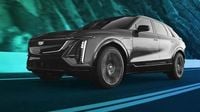Electric vehicles (EVs) are no longer just a futuristic dream—they’re rapidly becoming a fixture on roads in the UK and the United States, breaking sales records and reshaping the auto industry. In September 2025, the UK saw a remarkable surge, with over 72,000 new electric vehicles registered, accounting for 23.3% of all new car sales, according to the Society of Motor Manufacturers and Traders (SMMT). Battery electric vehicles (BEVs) alone soared by 29% compared to the previous year, marking the best month ever for BEVs in the UK. When hybrids are included, electrified vehicles made up more than half of all new registrations, helping the UK car market achieve its strongest September since 2020 (as reported by Jang and Tech Digest).
This boom is largely credited to the government’s Electric Car Grant, reintroduced in July 2025, which offers buyers up to £3,750 off the price of 36 electric car models. Over 20,000 people have already claimed the discount, drawing from a £650 million funding pool. The grant’s impact has been immediate and dramatic. “Our discounts have sparked a surge in electric car sales, making them cheaper and within reach of more households than ever before,” said Transport Secretary Heidi Alexander, as quoted by Carwow. She added, “By cutting costs for families we’re supporting industry, backing British jobs, and powering up growth.”
The grant is not just making new EVs more accessible—used electric car prices have dropped by over 20% since last year, and the price gap between new petrol and electric cars has narrowed by 14%, now averaging £8,229. EV drivers can also save up to £1,500 a year on fuel and running costs compared to petrol cars, according to government figures cited by Carwow.
Industry leaders are quick to point out that this is not just a flash in the pan. Mike Hawes, chief executive of the SMMT, emphasized, “Electrified vehicles are powering market growth after a sluggish summer—and with record ZEV [zero emission vehicle] uptake, massive industry investment is paying off, despite demand still trailing ambition.” John Veichmanis, CEO of Carwow, noted, “Since the scheme launched, EV enquiries on our platform have doubled. The grant is transforming curiosity into action, encouraging drivers to try an electric car for the first time—and once they do, most never look back.”
The government’s ambitions are clear: zero-emission vehicles are targeted to make up 28% of new car sales by the end of 2025. While the pure electric share is still a bit shy of that goal, industry analysts say that with various “flexibilities” built into the Zero Emission Vehicle (ZEV) mandate, sales are generally ahead of where they need to be (Tech Digest).
Of course, incentives alone aren’t enough. The UK is also investing heavily in charging infrastructure, with over 85,000 public charging points across Britain and one being added every half hour. A further 100,000 are planned, backed by a £381 million local infrastructure fund. An additional £63 million is earmarked for innovative charging solutions, including pavement-to-home connections, which could allow some drivers to run their EVs for as little as 2p per mile.
But the grant isn’t without its limitations. It currently applies to about a quarter of BEVs due to price caps and manufacturing emission rules, which effectively block many Chinese brands. Nevertheless, the ever-increasing variety of eligible models—37 at present, including Ford, Nissan, Vauxhall, and Citroen—has helped drive demand, with some models seeing a 118% spike in enquiries.
The electric revolution is not limited to the UK. Across the Atlantic, Cadillac achieved a historic milestone in the third quarter of 2025, with electric vehicles accounting for nearly 40% of its new car sales in the US—a staggering 154% increase compared to the same period last year, according to UNN and InsideEVs. This surge was fueled by a now-expired federal incentive of $7,500, prompting buyers to rush dealerships before the benefit ended.
General Motors’ luxury division was well prepared, with its lineup ready to meet the demand. In just three months, Cadillac sold 18,383 electric vehicles, including 7,309 units of the Lyriq, 4,886 of the compact Optiq, 3,924 of the three-row Vistiq, and 2,264 of the Escalade IQ EV. The Optiq’s performance was particularly notable, achieving almost half of its annual sales in a single quarter. The Vistiq, resembling a smaller Escalade, accounted for 70% of its annual volume in just three months. While gasoline models, especially the traditional Escalade, remain popular, Cadillac’s electric vehicle sales have increased 88% year-to-date compared to 2024. The third quarter of 2025 was Cadillac’s best third-quarter and best full-year performance since 2013.
“Thanks to the tax credit and buyers’ fear of missing out on the benefit, GM’s luxury car division sold two out of every five new cars as electric vehicles, making this quarter the most successful in the brand’s history in the EV market,” reported UNN.
The UK and US stories offer both parallels and contrasts. In both countries, government incentives have proven to be powerful catalysts, giving hesitant buyers the final push to make the switch to electric. The results are clear: record-breaking sales, an expanding array of models, and a growing infrastructure network. Yet challenges remain. In the UK, the Electric Car Grant’s restrictive eligibility and the need for more private buyers to join the movement are ongoing concerns. Mike Hawes of the SMMT stressed, “The Electric Car Grant will help to break down one of the barriers holding back more drivers from making the switch—and tackling remaining roadblocks, by unlocking infrastructure investment and driving down energy costs, will be crucial to the success of the industry and the environmental goals we share.”
There’s also speculation that the intense demand for the UK grant could lead to the scheme closing earlier than planned, raising questions about what will sustain momentum once incentives run out. Meanwhile, in the US, Cadillac’s electric surge was tied directly to a temporary federal incentive. Now that the $7,500 tax credit has expired, the sustainability of such high EV sales is uncertain, especially in the face of broader economic and industry challenges.
What’s not in doubt is the direction of travel. With governments setting ambitious targets to phase out petrol and diesel vehicles—like the UK’s 2030 ban on new petrol and diesel car sales—and automakers pouring billions into electrification, the electric car transition is accelerating. The coming years will test whether this momentum can be maintained as incentives wane and infrastructure is put to the test. For now, though, the road ahead for electric vehicles looks busier—and brighter—than ever.

